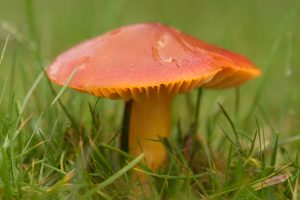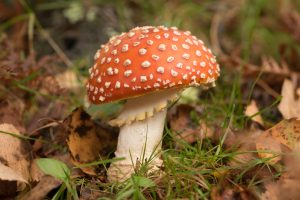Fungi season in the South Downs
October 5, 2018
When you walk in the woods of the South Downs something incredible is happening under the leaf litter. In autumn, the fruits of nature’s labour arise in abundance. Words by Daniel Greenwood.
Beneath our feet the fungal web or ‘mycelium’ of fungi are coalescing with the roots of trees to maintain a biological network crucial to life on earth. The mushrooms we see above ground are the fruiting bodies that produce reproductive spores and allow more of that fungal web to take root elsewhere.
Tree and fungi experts have found that many species of tree depend on a biological partnership with fungi to grow as tall, quickly, and vigorously as they do. This is because many species of tree depend on ‘mycorrhizal’ relationships with fungi to find nutrients and minerals that they are unable to gather alone.
The fungal hyphae of some species sheath the microscopic root hairs of trees and are then directed to gather the goods. In return the fungus will receive water and other rewards from the tree that it can’t extract from the soil on its own. Water is key to a fungus’s ability to produce a mushroom and therefore reproduce.
This is a relationship that could be as old as life on earth. Fungi is found in the fossil record some 800 million years back. It’s likely that plants and fungi came onto land in partnership from the depths of primordial oceans.
Away from the woods on the South Downs, the rare habitat of chalk grassland is home to a species of mushroom that has suffered severe declines in the past century. If you look closely this autumn waxcaps, a family of colourful mushrooms, can be seen in the cropped grasslands of the chalk hills. These species are susceptible to disturbance, pollution from chemicals and are destroyed by ploughing. They are some of the most beautiful mushrooms we have in the UK (see photo at the top of this story and below). Some of the common species you can see are blackening and scarlet waxcaps, the last of which glows a bright red against the turf.
On the heaths the iconic but toxic fly agaric grows at the edge of footpaths. Its name derives from the fact that for centuries it has been used to lure and kill flies indoors. In Northern Scandinavia it is used for tribal purposes by the ethnic Sami people and some suggest its red and white colouring is why Father Christmas is dressed in the same colour. Add to that the visions of flying reindeer described during ritual activities, its use to lure reindeer in for herding, and the fact that mushrooms were gathered in sacks and then left to dry in trees of spruce or fir, the original Christmas trees.
Wherever you are on the Downs this autumn, take a moment to think about all that’s happening underfoot and how it has helped people to prosper.
Please remember!
Foraging for mushrooms should only be done if you have clear permission from the landowners. Some landowners do not allow foraging.
Some species of mushroom are poisonous to people. Never eat wild mushrooms unless you are very confident in your ability to identify edible species (there are courses) and that there is no contamination in their environment.


